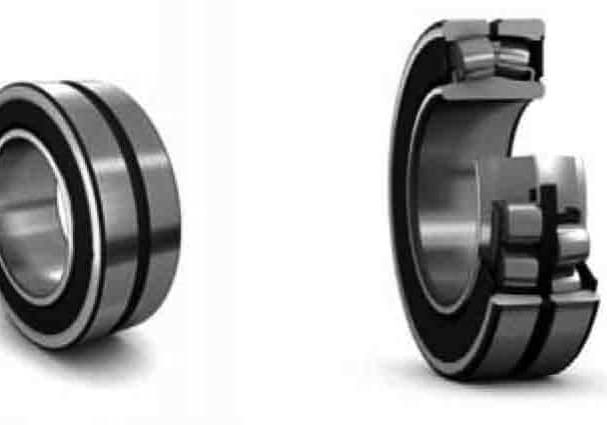The series further examines the continent’s framework for its first codes.
Part One of this series (ELEVATOR WORLD, January 2018) introduced “Apparecchi di Sollevamento e di Transporto: Gli Elevatori Industriali Considerati nei Riguardi della Sicurezza del Loro Esercizio” (“Lifting and Transportation Equipment: Industrial Elevator Use and Safety”) by Italian engineer Luigi Pontiggia, director of the Associazione Degli Industriali d’Italia per Prevenire gli Infortuni sul Lavoro. This work, first published as a 24-part series of illustrated articles in L’industria Rivista Tecnica ed Economica Illustrata in 1910-1911 and published in book form in late 1911, included the first attempt to produce a comprehensive account and evaluation of European elevator regulations.
Pontiggia’s examination of regulations in England was also addressed in Part One. That discussion focused on the limited set of regulations found in the Factory and Workshop Act of 1901 and the broader set of suggested regulations found in W. Sydney Smith’s Report on the Construction, Arrangement, and Fencing of Hoists and Teagles (1904). The latter report included a summary of German, French and Belgian regulations.
The French and Belgian regulations referenced by Smith, while limited in scope, surpassed the rules found in the Factory and Workshop Act:
“France (1894)
- Hoists, lifts and elevators should be controlled and arranged so that the shaft of the lift and its counter balance is closed, that the closing of the well at the landing place of the different floors takes place automatically and that nothing can fall from the cage into the well.
- In the case of passenger hoists, the load must be calculated at one-third of that allowed for goods, and the hoists must be provided with brakes or other safety apparatus.
“Belgium (1894)
- Hoists, elevators, lifts, cranes and similar apparatus must be labeled with their power reckoned in kilograms and, if used by the workpeople, with the number of persons they may carry with safety.
- The hoists, lifts and elevators must be controlled and arranged so that nothing can fall from them. The openings in the floors must be surrounded by a handrail, one of the sides of which (either in whole or in part) must be in the form of a movable barrier opening from the outside and closing automatically.
“England (1901)
Rule 10. Fencing of machinery. With respect to the fencing of machinery in a factory, the following provisions shall have effect: (a.) Every hoist or teagle, and every flywheel directly connected with the steam or water or other mechanical power, whether in the engine-house or not, and every part of any water wheel or engine worked by any such power, must be securely fenced.”
It is important to note that, in each case, these rules were a small part of a broader set of regulations designed to ensure safe working conditions in factories and industrial settings.
Although Pontiggia referenced the 1894 French regulations, he did not mention the contemporary Belgian regulations. Instead, he referred to a more recent set of Belgian guidelines, from 1905, which were similar in tone and content to the earlier rules and, once again, included in a set of regulations that addressed worker safety, Règlement Général Prescrivant les Mesures à Observer en Vue de Protéger la Santé et la Eécurité des Ouvriers dans les Entreprises Industrielles et Commerciales Assujetties). These regulations (No. 33-35) were organized under the heading “Lifting Devices”:
- “33. All elevators shall be constructed of appropriate materials, which must be used in a manner that ensures sound construction. All elevators shall be equipped with brakes or other safety devices designed to prevent their unintentional or accidental descent.
- “34. Elevator cars shall be designed such that all loads are securely carried within the car.
- “35. Elevator shafts shall be protected by railings or other means, and shaft openings shall be equipped (when possible) with automatically operating barriers.”
Pontiggia reported that similar regulations had been approved in Italy in 1899. These followed the pattern found in England, France and Belgium in their brevity and their inclusion in a general industrial safety regulation, Regolamento Generale per la Prevenzione Degli Infortuni Nelle Imprese e Nelle Industrie:
- “Article 9. All freight hoists and elevators must be equipped with signs that clearly state their capacity. Elevators cannot be used to carry passengers unless they are equipped with safety devices.
- “Article 10. Elevator cars must operate in guides and must be designed to safely carry their rated loads. Elevator and counterweight shafts must be enclosed and protected to prevent injury, and all elevator cars and shafts shall be equipped (when possible) with automatically operating safety gates or barriers.”
In an appendix, Pontiggia included two sets of suggested “requirements” for elevators used in industrial settings. These had been drafted by the Associazione Fegli Industriali d’Italia per Prevenire gli Infortuni sul Lavoro in 1897 and concerned elevators designed to carry freight only, and those designed to carry freight and passengers. Each set consisted of seven articles that addressed a variety of safety concerns. The requirements for freight-only elevators were as follows:
- “Art. l. Elevators shall not carry loads greater than the capacity set by the manufacturer. All materials must be loaded with care, and the necessary precautions must be taken to ensure that materials cannot fall out of the car during transit.
- “Art. 2. Only designated employees may operate elevators.
- “Art. 3. Passengers are forbidden to use elevators to go from one floor to another.
- “Art. 4. It is forbidden to open a shaft door when the car is not present at the landing.
- “Art. 5. Someone who is on a different floor from the one where the car is parked may not attempt to move the car without first giving a signal and receiving an assurance that the car may be safely moved.
- “Art. 6. Elevator shaft doors must be closed after the car has departed.
- “Art. 7. The lifting and control chains or ropes and the engine must be periodically inspected, and all identified problems must be reported immediately.”
The requirements for elevators that carried freight and passengers were almost identical, with one important difference:
- “Art. 6. The lifting and control chains or ropes and the automatic safety device (which is required by law) must be periodically inspected, and all identified problems must be reported immediately. The safety equipment must also be tested at least once a year.”
The presence of a legal requirement for automatic safeties on elevators that carried passengers suggests the existence of an earlier law, which preceded the 1899 Italian regulations referenced above.
The earliest regulation Pontiggia identified (although he did not reprint the text) was also the vaguest. Article 7 of the Danish Machine Protection Act of 1889 required “the development of detailed rules for the design and use of dangerous machinery.” This simple statement, which made no reference to elevators or hoists, promoted the drafting of one of the first national elevator codes. The code, Bekendtgørelse angaaende Indretningen og Brugen af Mekanisk Drevne Elevatorer og Hejseværker, was completed in 1899, revised in 1903 and revised again in 1908. However, while Pontiggia referenced the 1908 Danish code, he did not provide a discussion of its contents. This is somewhat surprising, given the fact that the code represented one of the first European attempts to draft a comprehensive set of regulations. Pontiggia chose instead to highlight a 1908 German code that both paralleled and surpassed the Danish example.
Pontiggia’s source for the German code was Ludwig Hintz’s 1908 book Handbuch der Aufzugstechnik. The book included the current national code in an appendix, “Polizeiverordnung, Betreffend die Einrichtung und den Betrieb von Aufzügen”. The code consisted of 42 rules housed in seven sections: “Scope,” “Classification of Elevators,” “General Provisions,” “Elevator Installations,” “Elevator Operation,” “Commissioning and Monitoring” and “Implementation.” The two most important sections were “General Provisions” and “Elevator Installations.” The former included recommendations on elevator speeds and the operation of safety devices. The maximum recommended speed was 1.5 mps. Elevator operators who wished to exceed this speed were required to obtain permission from local building authorities. Automatic safeties were required to operate such that the car would not descend more than 0.25 m after the safeties were activated.
The section on elevator installations was organized in a manner that would have seemed familiar to American code writers in the 1920s and 1930s. The section was divided into two subsections: one on passenger elevators and one on freight elevators. Each section included approximately the same number and type of rules. The common sets of rules addressed “Allowable Rope and Chain Loading,” “Shaft Doors,” “Car Controllers,” “Automatic Stopping Devices,” “Position Indicators” and “Signage.” This code was one of the first to specify safety standards for hoisting ropes:
- “Rope strength shall be calculated in such a way that the tensile and flexural stress attributable to each rope does not exceed one-sixth of its breaking strength. The bending stress is to be calculated at the point of contact of the rope and pulley.”
In addition to technical standards, the code also defined various operational rules. All passenger elevators were required to have signs posted adjacent to shaft doors and in the cars. The signs were required to be “clearly marked with the words ‘Passenger Elevator,’ identify the maximum permissible load (including the operator) in kilograms, list the maximum number of passengers allowed and provide a warning that the elevator should only be used when an operator is present.” To aid in calculating loads, the code stated that the weight of one person should be assumed to be 75 kg (165 lb.). Freight elevators not designed to carry passengers were required to have signs posted adjacent to shaft doors that, in addition to identifying the maximum permissible load, read “Caution! Elevator! No Passengers Allowed!”
The code also provided regulations for elevator operators that provide insights into the assimilation of new technology. Passenger elevators with “mechanical controls” required an operator who was at least 18 years old, understood the basic technical operation of the elevator and had received a “certificate of competence” from a “competent expert.” Passenger elevators with “electrical controls” required an operator with similar qualifications. However, in this case, the minimum age was lowered to 15, provided that a “certified elevator attendant” — charged with overseeing the elevator’s mechanical equipment — was present in the building when the elevator was in use. It may be reasonable to assume that mechanical control referred to older systems of operation, such as shipper ropes, while electrical control represented the newest systems that were, in theory, easier to use.
Pontiggia summarized or directly quoted 17 of the 42 rules found in the 1908 German code. Given his focus on these regulations, it is surprising that he did not reference the other code-related document included in Hintz’s book. In addition to publishing the 1908 code, Hintz also published a parallel document, Ausführungsanweisung zur Polizeiverordnung, Betreffend die Einrichtung und den Betrieb von Aufzügen, intended to provide guidance on the use and interpretation of the code’s rules. An analysis of these guidelines is outside the scope of this article; however, a future article will explore this document, as well as the full story of the development of the German code, which began in the early 1890s.
Pontiggia’s discussion of European regulations and his thorough presentation of the German code was not, however, evidence that he supported the development of national codes or regulations. He concluded his examination by stating that, while the various rules provided food for thought and a possible direction for future conversations, the best result would be for elevator manufacturers and building owners — at least in the case of factories and industrial settings — to assume full responsibility for safe elevator design and operation. Pontiggia saw no need, at least in Italy, to pursue the development of “burdensome and prohibitive” regulations.
Get more of Elevator World. Sign up for our free e-newsletter.









